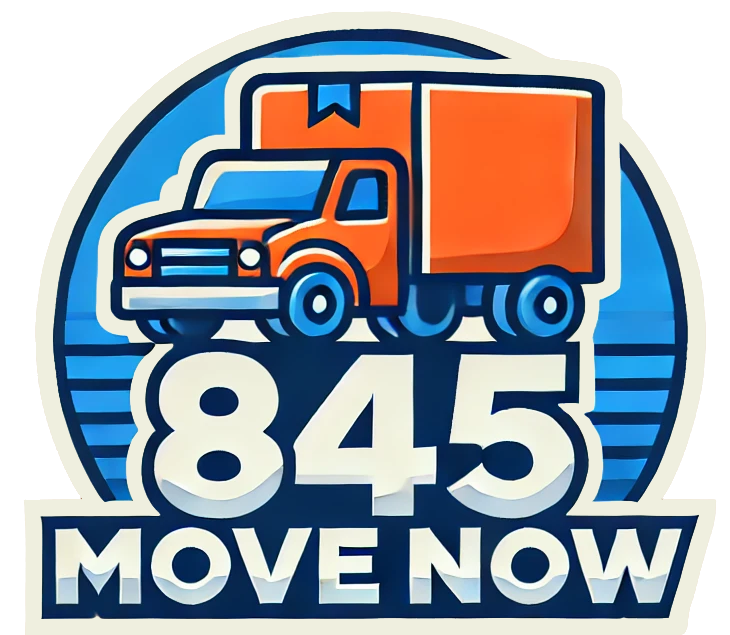Moving long distances can be a significant challenge, especially when it comes to protecting your valuables. Many people underestimate the risks involved, such as humidity and potential hazards during transit. This guide will cover essential steps, including creating a detailed inventory, utilizing professional packing services, and choosing trustworthy movers. By following these tips, readers will learn how to safeguard their belongings effectively, ensuring a smooth relocation experience. Addressing these concerns will help alleviate the stress of moving and protect valuable items from damage or loss.
Key Takeaways
- Create a detailed inventory of valuables to ensure nothing is overlooked during the move
- Use high-quality packing materials to protect fragile items and valuables effectively
- Personally transport important documents and valuables to minimize the risk of loss
- Obtain professional appraisals for high-value items to ensure proper insurance coverage
- Research and select trustworthy moving companies to safeguard possessions during the relocation
Create a Detailed Inventory of Your Valuables
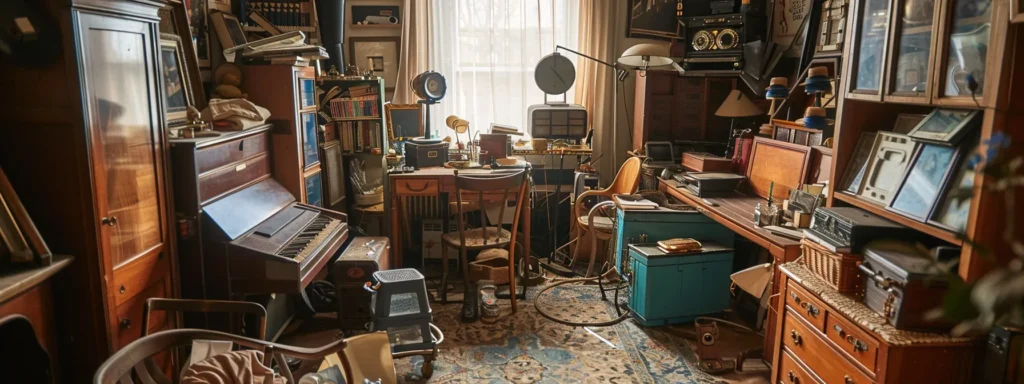
Creating a detailed inventory of valuables is essential for a safe move with a long distance mover. Start by listing all high-value items, ensuring nothing is overlooked. Photograph and document each possession for accurate records. For items of significant worth, obtaining professional appraisals may be necessary. Finally, securely store inventory records, perhaps in a safe deposit box, to mitigate risk during the moving process.
List All High-Value Items
When preparing for a long move, it is vital to list all high-value items to ensure they are properly accounted for and protected. This includes electronics, jewelry, artwork, and important documents, which may require special handling by moving companies. By identifying these items early, individuals can plan for appropriate packing materials, such as sturdy cardboard boxes, and consider any potential customs regulations if moving across state lines, thus minimizing the risk of unexpected expenses during the relocation process:
- Electronics (e.g., computers, televisions)
- Jewelry and valuable accessories
- Artwork and collectibles
- Important documents (e.g., passports, legal papers)
- Antiques and heirlooms
Photograph and Document Each Possession
Photographing and documenting each possession is a critical step in protecting valuables during a long move. This process not only provides a visual record of items but also helps in assessing risks associated with potential damage or loss. For instance, capturing images of valuable items, such as cash, jewelry, or electronics, can be invaluable when dealing with customer serviceclaims if something goes wrong. Additionally, ensuring that these records are stored in a moisture-free environment will further safeguard against any unforeseen circumstances that may arise during the relocation process.
Obtain Professional Appraisals as Needed
Obtaining professional appraisals for high-value items is a prudent step in ensuring their protection during a long move. Appraisals provide an accurate assessment of an item’s worth, which can be crucial for insurance purposes and secure storage decisions. When seeking appraisals, individuals should be aware of any associated fees and consider tips for selecting reputable appraisers who understand the specific weight and value of items like antiques or collectibles, ensuring they are properly packed in crates for safetransport.
Securely Store Inventory Records
Securely storing inventory records is a critical step in protecting valuables during a long move. Individuals should consider using a fireproof safe or a secure digital storage solution to keep these important documents safe from damage or loss. By ensuring that inventory records are easily accessible yet protected, movers can effectively manage their cargo and transport process, providing peace of mind throughout the relocation journey.
With your inventory in hand, you now have a clear picture of what matters most. Next, it’s time to protect those treasures with the right insurance coverage.
Secure Comprehensive Insurance Coverage
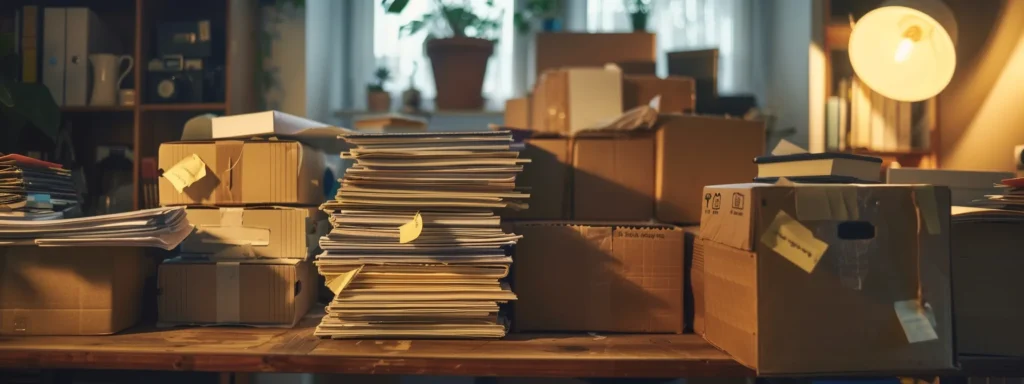
Reviewing existing insurance policies is crucial during the moving process to ensure adequate coverage for valuables. Attention should also be given to exploring additional coverage options that may be necessary for high-value items. Understanding the claims process is essential for addressing any emergencies that may arise, while keeping insurance documentation accessible will facilitate a smooth experience with movers. Each of these aspects plays a vital role in protecting valuables throughout the relocation.
Review Existing Insurance Policies
Reviewing existing insurance policies is a critical step in safeguarding valuables during a long relocation. Movers should assess their current coverage to ensure it adequately protects fragile items, antiques, and other high-value possessions. Understanding the claims process is essential, as it allows individuals to navigate any potential issues with their storage company or moving service efficiently:
- Check for coverage limits on fragile items.
- Verify if antiques require additional insurance.
- Understand the claims process for lost or damaged items.
- Consult with the storage company about their insurance options.
Explore Additional Coverage Options
Exploring additional coverage options is essential for protecting valuables during a long move. Professional moving companies often offer specialized insurance plans that cater to high-value items, such as fine art and antiques, ensuring that these possessions are adequately covered in case of damage or loss. By understanding the claims process associated with these additional policies, individuals can make informed decisions about their storage solutions and ensure their valuables are safeguarded throughout the relocation journey.
Understand the Claims Process
Understanding the claims process is vital for ensuring the safety of valuables during a long move. Individuals should familiarize themselves with the specific steps required to file a claim in the event of theft or damage, particularly for high-value items like musical instruments. Accessibility to insurance documentation and clear communication with the moving company can significantly streamline the claims process, providing peace of mind and ensuring that any potential issues are addressed promptly and effectively.
Keep Insurance Documentation Accessible
Keeping insurance documentation accessible is vital for a smooth moving experience. Individuals should store these important papers in a designated folder that travels with them, rather than in the moving truck, to ensure they are readily available if needed. This practice not only facilitates quick communication with the moving company in case of any issues but also helps in filing claims for damaged property, especially when using protective materials like foam and bubble wrap for fragile items.
- Store insurance documents in a designated folder.
- Keep the folder with personal belongings, not in the moving truck.
- Ensure quick access for communication with the moving company.
- Use protective materials like foam and bubble wrap for valuables.
Insurance protects what matters most. Next, the right packing materials will safeguard your belongings as you move.
Utilize Appropriate Packing Materials
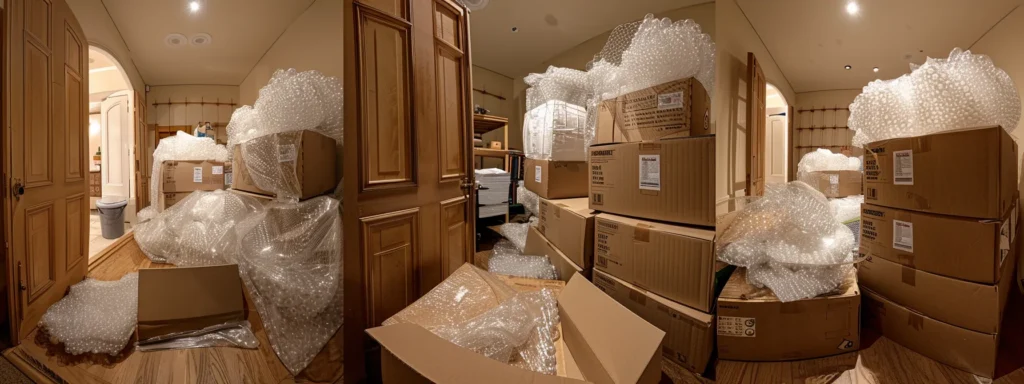
Utilize Appropriate Packing Materials
Choosing the right packing materials is crucial for protecting valuables during a long move. Selecting high-quality boxes and containers ensures durability, while using protective wraps and padding materials safeguards fragile items. Investing in specialty supplies for delicate possessions and properly sealing and labeling each box will streamline the moving day process. These steps are essential for a smooth experience with a professional moving company.
Select High-Quality Boxes and Containers
Selecting high-quality boxes and containers is essential for safeguarding valuables during a long move. Sturdy, well-constructed boxes can withstand the rigors of transportation, reducing the risk of damage to fragile items. For instance, using double-walled boxes for heavier items and specialized containers for delicate possessions ensures that everything is packed securely and efficiently, providing peace of mind throughout the relocation process:
| Item Type | Recommended Box Type | Notes |
|---|---|---|
| Electronics | Double-walled boxes | Provides extra protection against impacts. |
| Glassware | Specialty dish pack boxes | Includes dividers for added safety. |
| Clothing | Wardrobe boxes | Allows hanging clothes to remain wrinkle-free. |
| Artwork | Flat boxes or crates | Prevents bending and damage during transport. |
| Books | Small, sturdy boxes | Easy to lift and prevents overloading. |
Use Protective Wraps and Padding Materials
Using protective wraps and padding materials is essential for safeguarding valuables during a long move. Bubble wrap, foam sheets, and packing paper provide cushioning that absorbs shocks and prevents damage to fragile items. For instance, wrapping glassware and ceramics in bubble wrap before placing them in boxes can significantly reduce the risk of breakage, ensuring that cherished possessions arrive at their new location intact:
| Item Type | Recommended Protective Material | Notes |
|---|---|---|
| Glassware | Bubble wrap | Wrap each piece individually for maximum protection. |
| Artwork | Foam sheets | Use for added cushioning against impacts. |
| Electronics | Anti-static bubble wrap | Prevents static damage during transport. |
| Furniture | Moving blankets | Protects surfaces from scratches and dents. |
| Collectibles | Packing paper | Wrap items securely to avoid movement in boxes. |
Invest in Specialty Supplies for Fragile Items
Investing in specialty supplies for fragile items is a critical step in ensuring their safety during a long move. High-quality packing materials, such as custom-sized boxes, foam inserts, and padded envelopes, provide the necessary protection for delicate possessions like glassware, artwork, and electronics. By using these specialized supplies, individuals can significantly reduce the risk of damage, ensuring that their valuables arrive at their new home in pristine condition:
- Custom-sized boxes for unique items
- Foam inserts for cushioning
- Padded envelopes for smaller fragile items
- Specialty dish pack boxes for glassware
- Artwork crates for paintings and sculptures
Properly Seal and Label Each Box
Properly sealing and labeling each box is a fundamental step in protecting valuables during a long move. Using high-quality packing tape to securely close boxes prevents items from shifting or falling out during transport. Additionally, clear labeling with detailed descriptions of the contents and designated rooms ensures that movers can handle each box appropriately, reducing the risk of damage and making the unpacking process more efficient.
Packing materials are just the beginning. Next, the way items are packed can make all the difference in a smooth move.
Apply Careful Packing Techniques
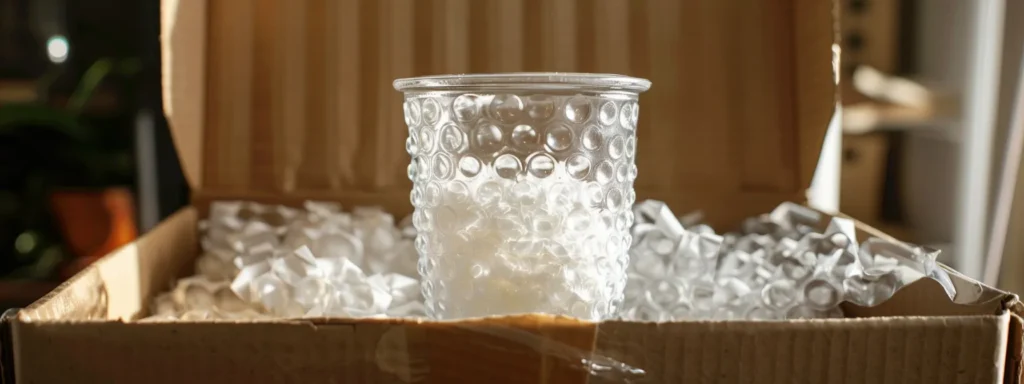
Applying careful packing techniques is vital for protecting valuables during a long move. Wrapping items individually prevents damage, while using cushioning materials helps to prevent movement within boxes. Electronics require secure packing to avoid impacts, and jewelry and small valuables should be stored safely to minimize the risk of loss. Each of these strategies ensures that cherished possessions arrive at their new destination intact.
Wrap Items Individually
Wrapping items individually is a crucial technique for protecting valuables during a long move. This method minimizes the risk of damage by ensuring that each item is cushioned and secured, preventing them from colliding with one another. For example, fragile items like glassware or electronics should be wrapped in bubble wrap or packing paper before being placed in boxes, which not only safeguards them from impacts but also makes unpacking easier by keeping similar items together.
Use Cushioning to Prevent Movement
Using cushioning materials is essential for preventing movement and protecting valuables during a long move. Items should be surrounded by packing peanuts, bubble wrap, or foam sheets to absorb shocks and keep them secure within their boxes. This practice not only minimizes the risk of damage but also ensures that fragile items, such as glassware and electronics, remain stable throughout the transportation process:
- Choose appropriate cushioning materials for different item types.
- Fill empty spaces in boxes to prevent shifting.
- Wrap delicate items thoroughly before placing them in boxes.
Pack Electronics Securely
Packing electronics securely is crucial to prevent damage during a long move. Individuals should use original packaging whenever possible, as it is designed to protect the device. If the original packaging is unavailable, wrapping electronics in anti-static bubble wrap and placing them in sturdy boxes will help absorb shocks and prevent impacts. Additionally, ensuring that all cords and accessories are neatly organized and labeled can streamline the unpacking process, making it easier to set up devices in the new location.
Safely Store Jewelry and Small Valuables
Safely storing jewelry and small valuables during a long move requires careful planning and execution. Individuals should consider using padded jewelry boxes or small, secure containers to keep these items organized and protected from damage. Additionally, placing valuable items in a carry-on bag rather than the moving truck ensures they remain within reach and reduces the risk of loss during transit:
- Use padded jewelry boxes for organization.
- Store small valuables in secure containers.
- Keep valuables in a carry-on bag for easy access.
Packing well is only part of the journey. The next step is finding movers who can be trusted to carry your belongings safely to their new home.
Choose Trustworthy Professional Movers
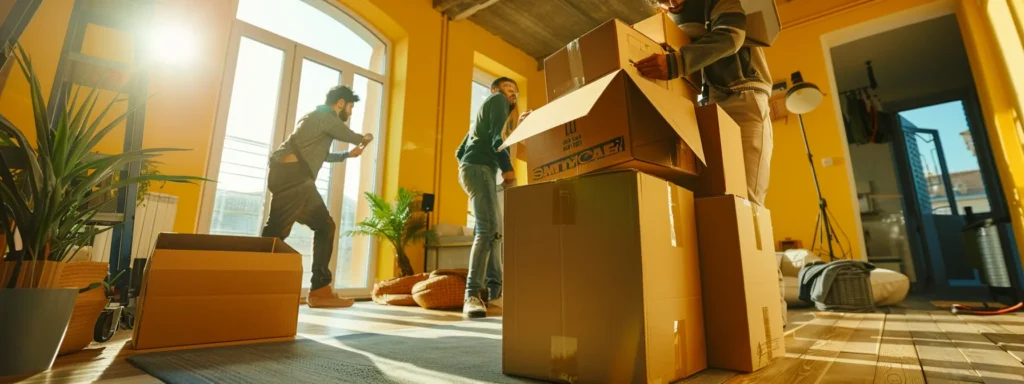
Choosing trustworthy professional movers is essential for protecting valuables during a long move. This involves researching and comparing moving companies, verifying their credentials and experience, and reading customer feedback. Understanding how each company handles valuables will provide insight into their reliability and care. Each of these steps ensures that individuals select a moving service that prioritizes the safety of their possessions.
Research and Compare Moving Companies
Researching and comparing moving companies is a critical step in ensuring the safety of valuables during a long move. Individuals should look for companies with positive customer reviews and a solid reputation in the industry, as this reflects their reliability and commitment to protecting possessions. Additionally, obtaining quotes from multiple movers allows for a better understanding of services offered and helps identify any potential red flags, such as unusually low prices that may indicate inadequate service or hidden fees.
Verify Credentials and Experience
Verifying the credentials and experience of professional movers is a crucial step in ensuring the safety of valuables during a long move. Individuals should check for proper licensing and insurance, as these factors indicate a company’s legitimacy and commitment to protecting clients’ possessions. Additionally, reviewing the company’s history and customer feedback can provide insights into their reliability and the quality of service they offer, helping individuals make informed decisions that prioritize the security of their belongings.
Read Customer Feedback
Reading customer feedback is a vital step in selecting trustworthy professional movers. Reviews provide insights into the experiences of others, highlighting the reliability and care that a moving company offers when handling valuables. By focusing on feedback related to the protection of items during transit, individuals can make informed decisions that prioritize the safety of their possessions.
| Feedback Aspect | Importance | Example |
|---|---|---|
| Reliability | Indicates if the company meets deadlines and commitments. | “They arrived on time and handled my items with care.” |
| Care for Valuables | Shows how well the company protects fragile items. | “My glassware arrived without a scratch.” |
| Customer Service | Reflects the company’s responsiveness and support. | “They were quick to address my concerns.” |
Understand Their Handling of Valuables
Understanding how professional movers handle valuables is crucial for ensuring their safety during a long move. Movers should provide clear information about their packing techniques, transportation methods, and any specialized equipment used to protect fragile items. By asking specific questions about their experience with high-value possessions, individuals can gauge the movers‘ commitment to safeguarding their belongings, ultimately leading to a more secure and stress-free relocation experience.
Choosing the right movers is just the beginning. As the day approaches, it’s wise to keep your most important items close at hand.
Keep Essential Valuables With You
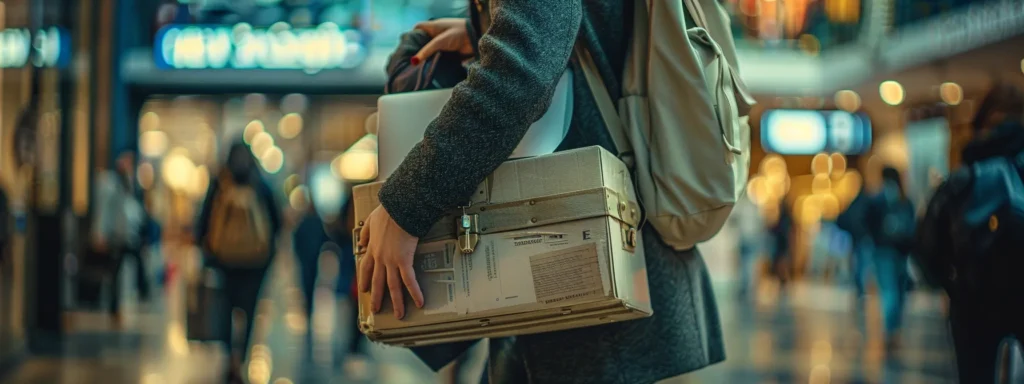
Transporting essential valuables during a long move is critical for ensuring their safety. Individuals should personally carry important documents, jewelry, and small treasures to minimize the risk of loss. Additionally, securing and monitoring portable electronics is vital. Planning ahead for personal transportation needs will further enhance the protection of these valuable items throughout the relocation process.
Personally Transport Important Documents
Personally transporting important documents is a critical step in safeguarding valuables during a long move. Essential items such as passports, legal papers, and financial records should be kept in a secure, easily accessible location, such as a carry-on bag. This approach minimizes the risk of loss or damage, ensuring that individuals have immediate access to these vital documents throughout the relocation process:
| Document Type | Recommended Storage Method | Notes |
|---|---|---|
| Passports | Secure carry-on bag | Keep within reach at all times. |
| Legal Papers | Folder with protective sleeves | Organize by category for easy access. |
| Financial Records | Waterproof document holder | Protect against moisture and damage. |
Carry Jewelry and Small Treasures During Travel
Carrying jewelry and small treasures during travel is essential for safeguarding these valuable items throughout a long move. Individuals should keep these items in a secure, easily accessible location, such as a carry-on bag, to minimize the risk of loss or damage. By personally transporting these cherished possessions, individuals can ensure they remain within reach and protected during the relocation process:
| Item Type | Recommended Storage Method | Notes |
|---|---|---|
| Jewelry | Padded jewelry case | Organizes and protects items from scratches. |
| Small Treasures | Secure pouch or container | Keeps items safe and easily accessible. |
| Valuable Documents | Waterproof document holder | Protects against moisture and damage. |
Secure and Monitor Portable Electronics
Securing and monitoring portable electronics during a long move is vital for protecting these valuable items. Individuals should keep devices such as laptops, tablets, and smartphones in a dedicated, padded bag that is easily accessible throughout the journey. Regularly checking on these items ensures they remain safe and undamaged, while also providing peace of mind that essential electronics are within reach when needed.
Plan Ahead for Personal Transportation Needs
Planning ahead for personal transportation needs is essential for ensuring the safety of valuable items during a long move. Individuals should consider the best way to transport their essential belongings, such as important documents and electronics, by keeping them in a secure, easily accessible location. By organizing these items in a dedicated bag or container, movers can minimize the risk of loss or damage, allowing for a smoother transition to their new home.
Conclusion
Protecting valuables during a long move is crucial for ensuring their safety and minimizing potential losses. By creating a detailed inventory, securing comprehensive insurance coverage, utilizing appropriate packing materials, and choosing trustworthy movers, individuals can significantly reduce risks associated with relocation. Personal transport of essential items, such as important documents and jewelry, further enhances security. Implementing these strategies not only safeguards cherished possessions but also provides peace of mind throughout the moving process.
